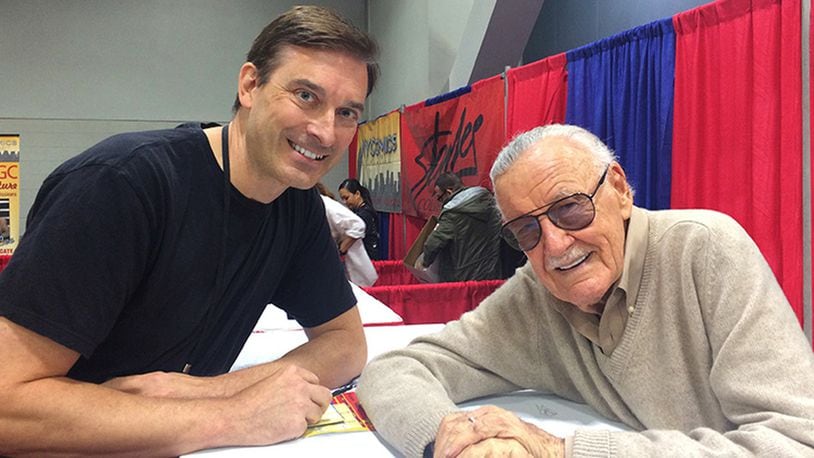Lee’s contributions to American comic books were as historical as his later cameos in Marvel Studios movies were hysterical.
His comic book innovations — beyond giving birth in 1960s to comic book heroes Spider Man, Thor, Fantastic Four, Hulk. X-Men, Avengers and many others — revolutionized a once stagnant art form limited to children’s sensibilities by portraying his super-human heroes as also battling human frailties.
“Stan Lee gave teens and college-aged readers a voice by creating superheroes that readers could relate to, like Spider-Man’s worries about popularity and dating,” said Robert Batchelor, a visiting professor of strategic communication at Miami University’s department of media, journalism and film.
Batchelor examined Lee’s life and business innovations in his 2017 book “Stan Lee: The Man Behind Marvel” and said “the best word to describe Stan is authentic.”
“He was authentic in his passion for life, which resulted in creating characters that people wanted to know better. Perhaps even more important, his authenticity rang true with fans, who clamored to meet him and kept him popular for nearly 60 years,” said Batchelor, who met Lee at the Cincinnati Comic Expo in 2016.
Batchelor’s book, which is offered to students in some of his classes as a source for study of celebrity branding and business communications, was written in the fashion of academic research of Lee’s life and cultural contributions rather than a traditional biography.
“The book is also written for the general public (and) tells the story about a man, who growing up in the Depression, managed to keep his beliefs that he would someday be someone important. It’s about a man who wanted to tell a good story with real and believable characters for people of all ages,” Batchelor said in an story published by Miami University last year.
“Lee always hoped to someday write the fabled Great American Novel,” Batchelor said. “With Spider-Man, the Avengers, Thor, and the other superheroes, however, he did so much more. He created the narrative that would soon dominate American and global culture.”
Batchelor told the Journal-News that “in the course of my research on Stan, I realized that although people would eagerly claim that they ‘loved’ Stan and were fans of his work and Marvel, they knew almost nothing substantial about him as a person or creative icon.”
“As a result, I purposely based the book on extensive archival research, rather than long interviews with people who knew Stan. Too many people say what they want the interviewer to hear and I wanted a more objective perspective,” said Batchelor, who grew up reading Marvel comics.
“Stan Lee is a creative icon, but perhaps even more important, he was the editorial director and talent manager at Marvel. He brought in the writers, artists, inkers, and others who made Marvel great long past his own time as editor in chief. He also approved all the merchandise that was licensed, so the man constantly worked and his work ethic was off the charts,” he said.
Lee teamed with legendary comic book artist Jack “The King” Kirby in the 1960s — you’ll see Kirby’s name in the end credits of most of Marvel’s movies. Their later personal and professional rift has for decades divided camps of passionate fans who argue Lee shortchanged Kirby’s role in creation of some of Marvel’s superheroes.
“Stan knew his limitations, which served him well as an editor and creative director at Marvel,” said Batchelor.
Lee and Kirby created what became known as the “Marvel method” wherein Kirby would first draw the action and Lee would then insert the appropriate dialogue in a reversal of comic industry practices at the time.
“One of his great gifts was spotting talent and utilizing great talent. Jack Kirby never achieved the public acclaim that Stan did, but he is perhaps the greatest comic book artist of all-time. When he and Stan put their efforts together in the early 1960s they needed each other and that drove their success.”
Their tumultuous partnership almost didn’t happen because the comic book industry in the early 1960s was a dying business model and both men were about to change careers.
“Most people don’t know this, but both Stan and Jack were about to leave the industry. The business fluctuations were driving them both to the brink,” said Batchelor.
“But what came out of that creative collision is some of the greatest work in American art history,” he said. “Not many people have touched more lives than Lee through the characters and the universe he created and co-created.”
About the Author
